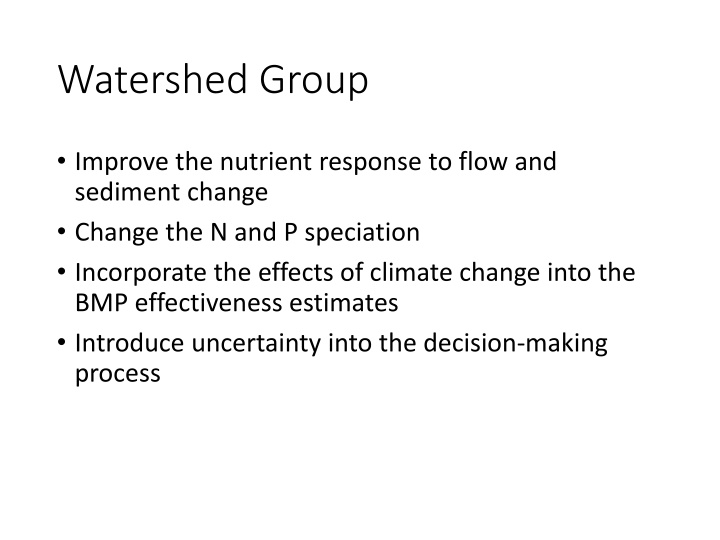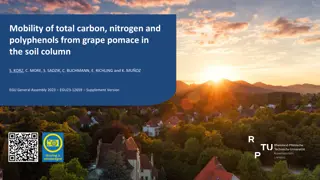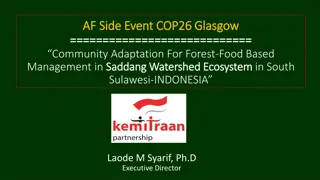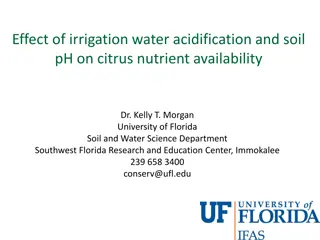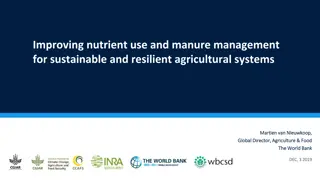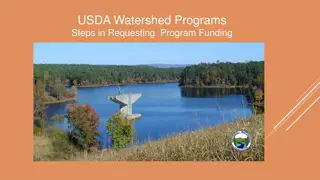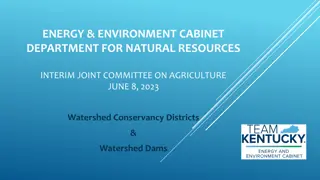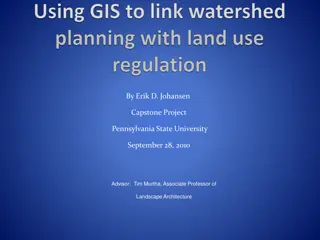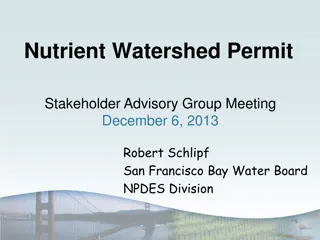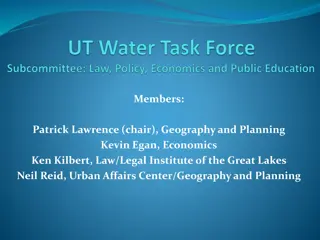Enhancing Watershed Nutrient Response and Climate Resilience
The Watershed Group aims to enhance nutrient response to flow and sediment changes, improve N and P speciation, and integrate climate change effects into BMP effectiveness estimates. Strategies include spatially varying N relationships, investigating WWTPs and stormwater systems, and reviewing speciation responses to climate signals. Incorporating climate change effects into BMPs is crucial for future resilience.
Download Presentation

Please find below an Image/Link to download the presentation.
The content on the website is provided AS IS for your information and personal use only. It may not be sold, licensed, or shared on other websites without obtaining consent from the author.If you encounter any issues during the download, it is possible that the publisher has removed the file from their server.
You are allowed to download the files provided on this website for personal or commercial use, subject to the condition that they are used lawfully. All files are the property of their respective owners.
The content on the website is provided AS IS for your information and personal use only. It may not be sold, licensed, or shared on other websites without obtaining consent from the author.
E N D
Presentation Transcript
Watershed Group Improve the nutrient response to flow and sediment change Change the N and P speciation Incorporate the effects of climate change into the BMP effectiveness estimates Introduce uncertainty into the decision-making process
Nutrient Responses to Flow and Sediment Changes Current TN is 1:1 with flow TP is based on surface runoff and sediment washoff except in developed where there is no effect 2019 and long term Spatially vary the N relationship. Perhaps existing sensitivities to groundwater recharge and available water capacity Developed area Sensitivity to P Review of small-scale modeling efforts Investigate WWTP, SSOs, and CSOs.
Change the N and P Speciation Current N speciation determined by observed relationship between load per acre and nitrate percent Probably a land use and water balance signal 2019 - How would speciation respond to climate signal? Perhaps looking at observed surface and baseflow speciation and apply modeled change in surface and baseflow? Likely assume no change Long term Complex observed Concentration-discharge relationships from existing data sets Mine existing data sets: DNR storm sampling network, national BMP database; MS4 databases; Jordan/Weller, Occoquan Land use and geology-dependent (through sparrow?). Can we tease out climate from land use and BMP implementation Review of smaller scale studies.
Change the N and P Speciation Current N speciation determined by observed relationship between load per acre and nitrate percent Probably a land use and water balance signal 2019 - How would speciation respond to climate signal? Perhaps looking at observed surface and baseflow speciation and apply modeled change in surface and baseflow? Likely assume no change Long term Complex observed Concentration-discharge relationships from existing data sets Mine existing data sets: DNR storm sampling network, national BMP database; MS4 databases; Jordan/Weller, Occoquan Land use and geology-dependent (through sparrow?). Can we tease out climate from land use and BMP implementation Review of smaller scale studies. Synthesis
Incorporate the effects of climate change into the BMP effectiveness estimates See prior STAC workshop! BMP panels are supposed to deal with it now, but none do Need IDF curves some are already developed Need response to IDF curves CBP recommend that states update their stormwater regulations (CA, WI, MA, Canada) Consider failure in extreme conditions Co-benefits change as well as efficiencies Request CBTrust RFP for BMP response to climate change.
Incorporate the effects of climate change into the BMP effectiveness estimates See prior STAC workshop! BMP panels are supposed to deal with it now, but none do Need IDF curves some are already developed Need response to IDF curves CBP recommend that states update their stormwater regulations (CA, WI, MA, Canada) Consider failure in extreme conditions Co-benefits change as well as efficiencies Request CBTrust RFP for BMP response to climate change. Synthesis
Incorporate uncertainty in the decision- making process Climate change presents an opportunity for a trial run of decision making under uncertainty Smaller stakes than full target-setting Some uncertainty components determined 2019 - Present to managers as probabilities 5% chance that climate has no or beneficial effect on oxygen 50% chance that it is equivalent to a 9 million lb reduction or more or Climate change increases risk of failure by a certain amount Reducing loads by 9 million lbs reduces that risk of failure by X% Longer-term fully integrate uncertainty into models and decisions Convert to probabilities of environmental consequences and benefits in dollars Consider robust decision making
